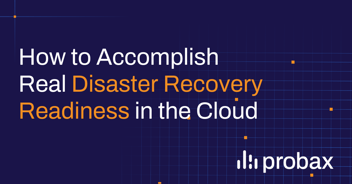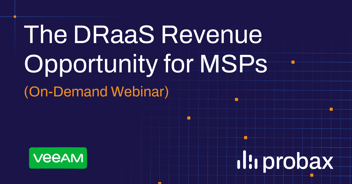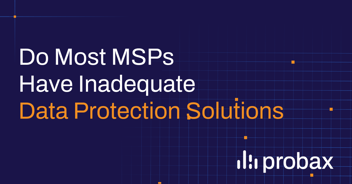It’s common for businesses to engage a Managed Service Provider (MSP) for managing their IT infrastructure, offering technical support to staff, managing user accounts and licenses, hardware procurement, as well as to support backup and recovery.
When it comes to recovering from a disaster, many businesses don’t understand that their MSP is relying on backup-based recovery. But backups alone are inadequate as a true disaster recovery solution. Similarly, third-party disaster recovery solutions which are not fully independent of backup data are also inadequate.
MSPs that fail to understand this concept are leaving their clients exposed to unnecessary risk when recovering from downtime
Even worse, the consequences of this approach may even result in unacceptable revenue loss due to the financial impact. For the MSP, this may result in a compensation claim for damages and losses suffered by their client.
Disaster Recovery as a Service, or DRaaS, based on replication is the only solution that will deliver the protection businesses need.
For MSPs, DRaaS also represents a major business opportunity.
A $23.3 billion DRaaS market for MSPs
By 2027, the DRaaS space is expected to become a $23.3 billion market, growing at a remarkable 23.3% Compound Annual Growth Rate (CAGR). Of this, it is projected that MSPs will constitute almost half of the total market by 2027.
The market size forecasts are only getting bigger with every passing year, and the number of companies with plans to adopt DRaaS methods continues to grow.
MSPs have a clear, growing market in which to enter and provide new managed services, as companies become more and more aware of the dangers of not having DR—as well as the savings and benefits associated with having a third party manage their disaster recovery initiatives.
Businesses are demanding true disaster recovery to minimize downtime
The sentiment in the IT world about disaster recovery is clear — 65% of organizations’ key IT decision-makers are not confident that data critical to business operations will be recoverable in case of a cyberattack.1
In response, 41% of these decision-makers are prioritizing Disaster-Recovery-as a-Service (DRaaS) as the solution to their concerns.
By 2023, 51% of organizations plan to adopt DRaaS to improve their resiliency to downtime.
Today’s organizations need data protection that gives them the ability to respond to an outage as quickly as possible, fail over and fail back to production rapidly while minimizing impact to operations.
Replication-based DRaaS represents the next generation of data protection and business continuity assurance. Plus, the ability to recover applications in the cloud, when needed, slashes the cost and complexity of traditional recovery capabilities.
Cloud-based disaster recovery already represents a critical business priority
According to the 3,000 global organizations who took part in Veeam’s 2021 industry research, integrated data protection and security, cloud workload portability, and the ability to do disaster recovery via a cloud service (DRaaS) represent top priorities for leadership teams.
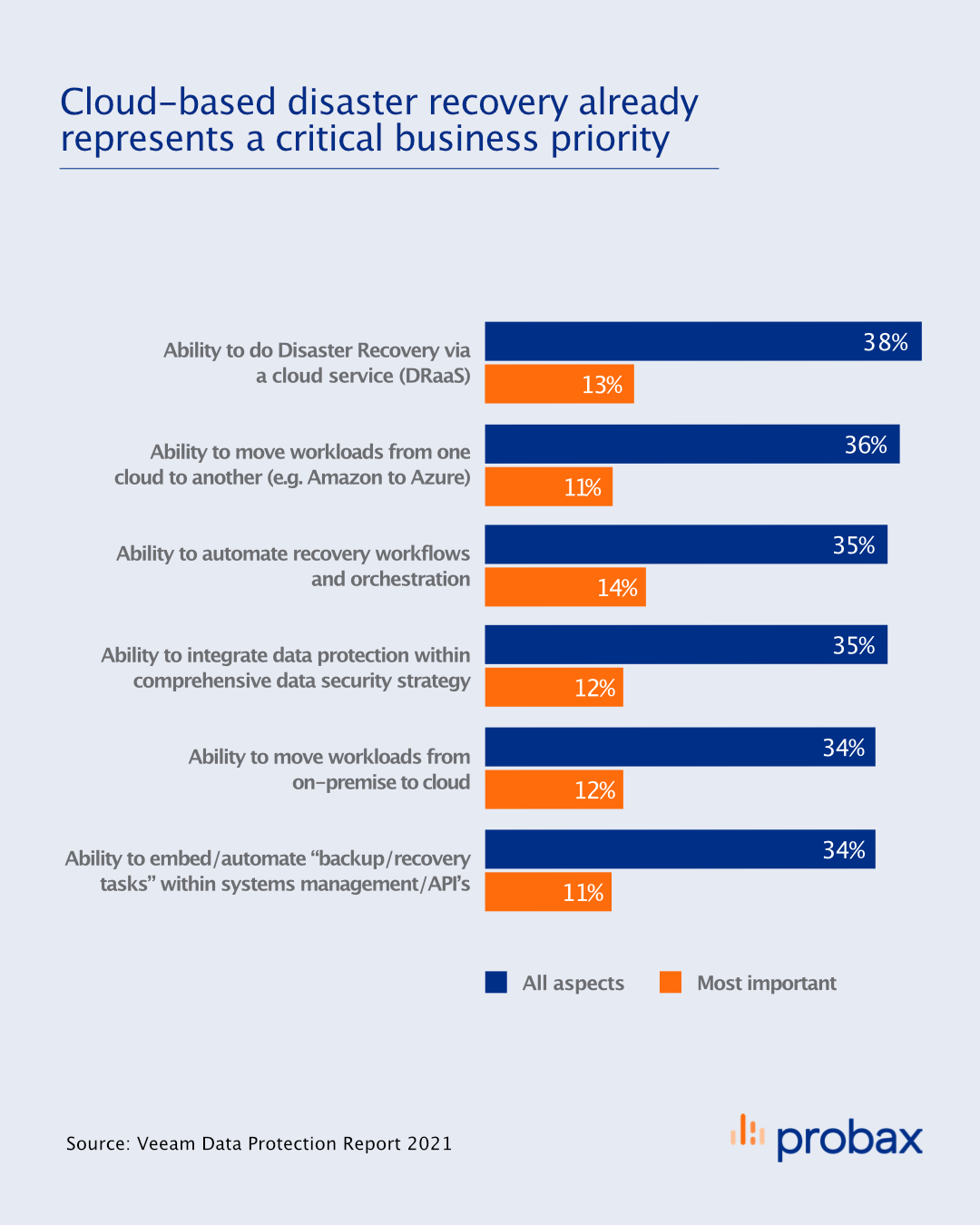
Cloud-based disaster recovery represents cost savings
Infrastructure & Operations (I&O) leaders are increasingly looking to DRaaS for a variety of reasons, including faster implementation, increased business resiliency and reduced costs.
Fiscally speaking, it is not uncommon for DRaaS prices to be 30% to 50% of what it would otherwise cost to build out, operate and maintain similar capabilities.3
When it comes to cloud-based DR, MSPs also benefit from cost savings in that they don’t need to build or maintain their own platform.
Outsourcing infrastructure, storage, networking and facility needs to vendors like Probax and Veeam results in an ability to consolidate and integrate costs, reduce capital and operational expenditure, minimize technical engineer time and focus on higher revenue earning opportunities.
Organizations are looking to their DRaaS providers to deliver a range of functions
There are a range of functions customers look to their DRaaS provider for, including monitoring backup/replication jobs and assisting with troubleshooting, capacity monitoring or management of cloud repositories, and architecture of backup/replication servers and storage.
These functions which organizations mostly consume from their DRaaS provider can be seen as two main categories, which are:
- The operational management of the secondary infrastructure including monitoring and architecture, and
- Business Continuity / Disaster Recovery (BC/DR) expertise including documentation, planning, testing and the actual recovery itself.
It will be beneficial for MSPs who are taking a DRaaS offering to market or who are looking to expand the reach of their DRaaS offering to position and articulate their offering in the context of these two key categories.
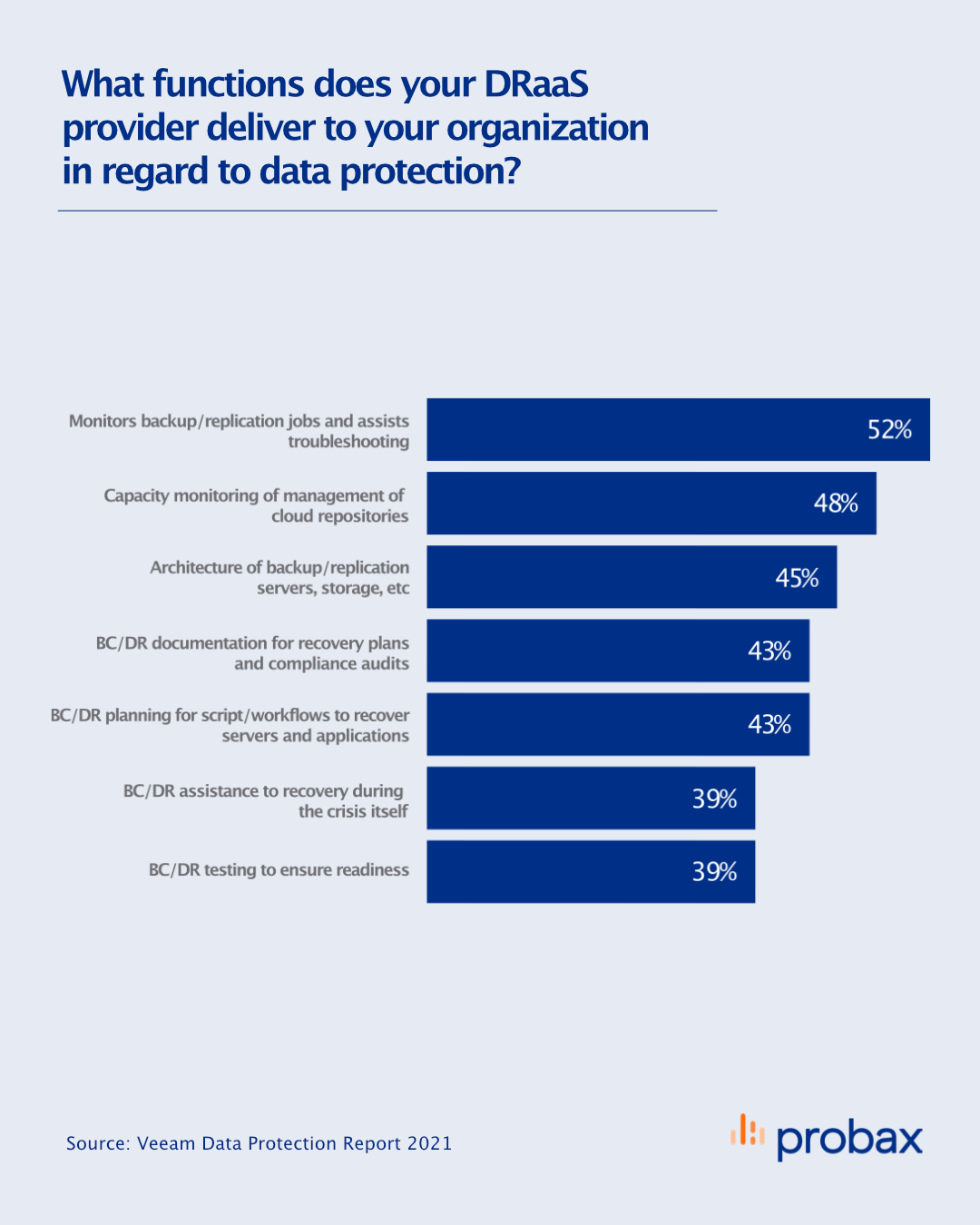
Addressing end user concerns about DRaaS is important
While there are main drivers encouraging DRaaS adoption, there are also concerns inhibiting certain cohorts to adopt DRaaS.
Business leaders surveyed had two top concerns with adopting DRaaS data protection solutions. They were concerns regarding security and lack of trust in the cloud, and questions around trusting 3rd party DRaaS providers to adapt due to continually evolving production environments.
There are four concerns tied for third according to survey respondents. These are concerns about compliance or regulatory mandates, concerns about limited control and/or visibility, complexity connecting to cloud resources during recovery, and concerns over budget and/or overpaying for DRaaS.
MSPs will need to strategically address these specific concerns that are inhibiting end user adoption of cloud-based DRaaS solutions.
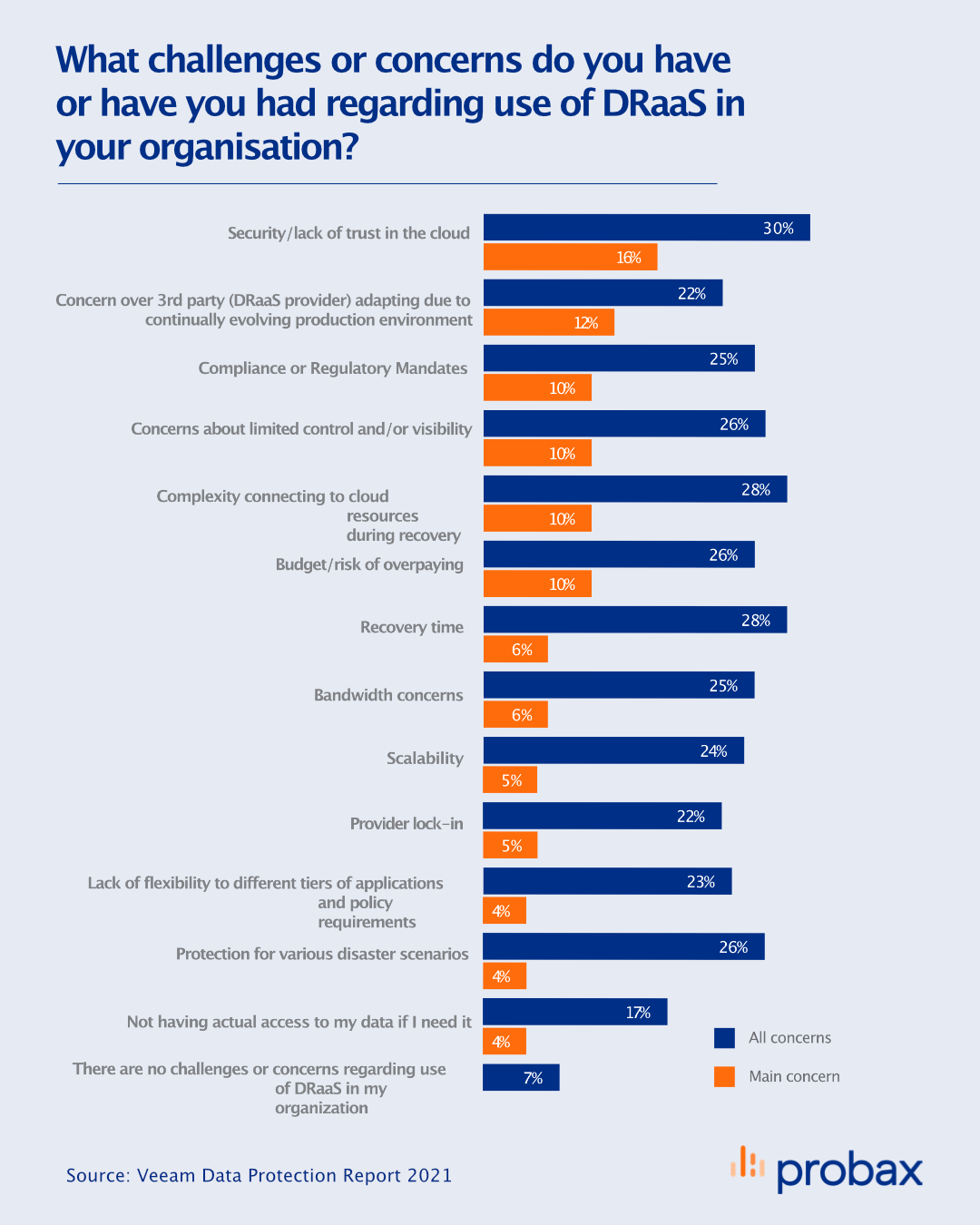
You need DRaaS in your MSP toolkit
Traditional backup only protects a segment of data. That's why our practical and free white paper Most MSPs Have Inadequate Disaster Recovery Solutions outlines everything your MSP needs to know about the importance of DRaaS.
Simply click below to download your copy today!
.png?width=352&name=are-your-msp-clients-adequately-protected%20(2).png)
